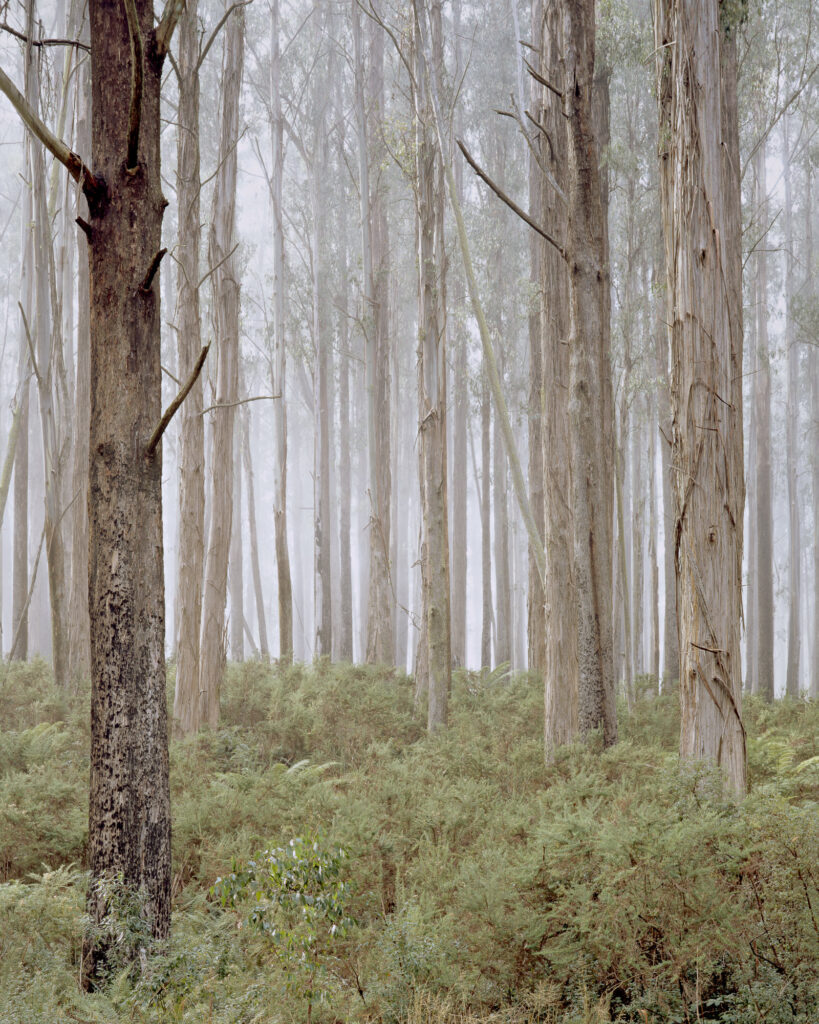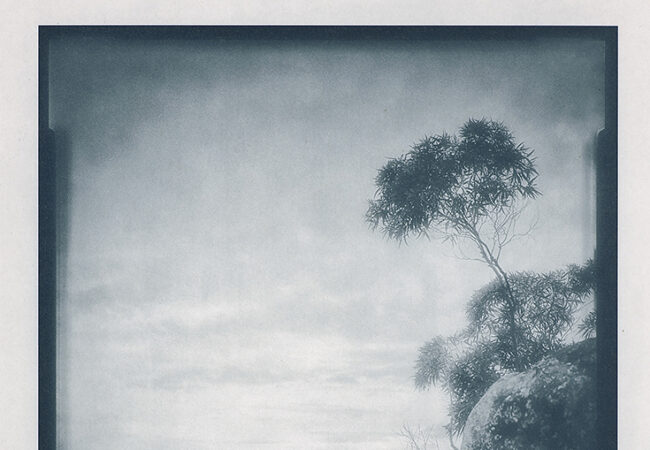
Exhibition: Relicts – Mark Darragh
Relicts explores the past, present, and future of Australia’s temperate and alpine flora. Many of the species and plant communities photographed can be described as ‘relicts‘, remnants of much larger and more extensive populations in the past. The exhibition also examines the bio-geographical relationship Australia shares with New Zealand, South America, and Antarctica, all once part of the ancient super-continent of Gondwana.
The large-format film photographs are drawn from journeys over a period of 19 years, from 2003 to 2022, and represent landscapes from Victoria, Tasmania, Queensland, New Zealand, and Chilean Patagonia.
Dictionaries define a ‘relict‘ as something that has survived, usually as a trace, from the past. In ecological and biogeographical terms, relicts are the descendants of once widespread taxa (or populations) that now have a narrow geographic distribution. Typically, they are small in number or severely restricted in geographic range.
The temperate forests and alpine ecosystems of south-eastern Australia are home to many species that can be described as relicts, remnants of much larger populations that can be traced back through geological time.
Today, the Southern Beech (Nothofagus spp.) and Conifer plant communities are considered relics—groups of plants that dominated the ancient supercontinent of Gondwana. These plants link us to areas such as Borneo, New Guinea, New Zealand, Patagonia, and Antarctica, our Gondwanan neighbours of the past.
Following the breakup of Gondwana, Australia became more arid and fire-prone. Fire resistant plants such as Eucalypts now dominate our landscape. Relict species and communities are found here too. One example is the small, highly scattered populations of Snow gums throughout southern and eastern Australia. These exist well outside their typical habitat in alpine and sub alpine areas. It has been suggested that these remnant Snow Gums are relicts of far more widely distributed populations that flourished during ice-ages in southern Australia in the past.
Over the last two decades, fires have burned vast areas of the east coast and south-east forests with increasing frequency. The scale and intensity of these fires, described as “mega-fires,” have ravaged forests once thought to be protected in conservation reserves, national parks, or areas historically too moist to burn. The result is a dramatic change in the species composition and structure of many ecosystems, even fire adapted ones, including the localised extinction of some species. These may well be the relicts of the future.
Angela Roberts-Bird Gallery, Gasworks Arts Park. Melbourne. 20 June – 9 July 2023
Main photograph above: Old growth Snow gum (Eucalyptus pauciflora), Alpine National Park, Victoria. Inkjet print.





